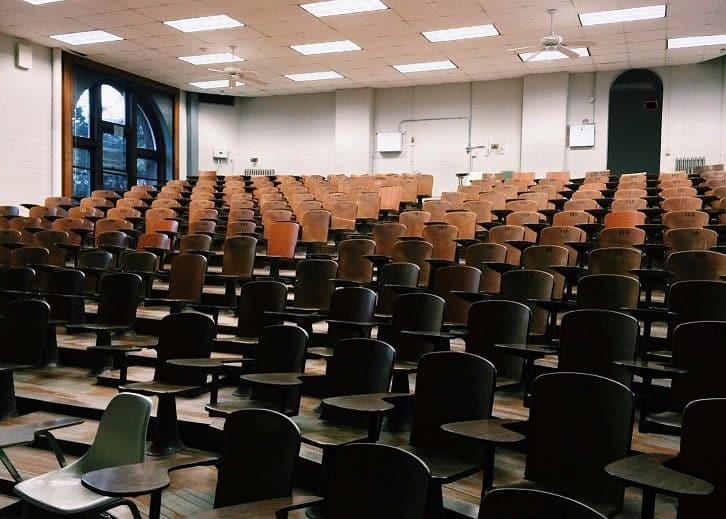The US Department of Justice last year finalized new regulations under Title II of the Americans with Disabilities Act (ADA), setting clear and enforceable standards for how public schools and educational institutions must make their digital content accessible to individuals with disabilities.
Beginning next year, colleges and universities will be required to make their websites, mobile apps, learning platforms, videos and other digital service content fully accessible to individuals with disabilities.
However, a recent study by education and technology solutions provider Anthology surveyed 2,500 faculty members across the US and revealed a gap between intent and execution when it comes to digital accessibility.
While 76% of educators agreed that accessible content improves student outcomes, only 11% reported having the tools and training they need to create content that meets accessibility standards. The study also found that more than 80% of faculty needed more information about Title II requirements and more than a third (36%) weren’t aware of the requirements at all.
These knowledge gaps, paired with limited time, inadequate training and unfamiliarity with accessibility tools, are leaving institutions vulnerable to compliance risks and students at risk of exclusion.
While the thought of making every piece of digital content accessible might seem daunting (enforcement begins in 2026, with varying deadlines based on populations served), AI-powered tools, like those offered by Verbit, can help schools bridge the gap.
On-demand webinar: Getting ahead of ADA Title II
Watch as Verbit and Anthology Ally discuss how institutions can streamline their accessibility strategies.
Key accessibility requirements for higher education
Under the updated Title II rules, digital content across higher education must adhere to WCAG 2.1 Level AA standards. This includes:
- Videos: All recorded and live-streamed videos must have accurate captions. For instructional or public-facing content, audio descriptions may also be required.
- Audio content: Podcasts, lectures and audio-only files must have transcripts that meet accuracy and formatting standards.
- PDFs and documents: Learning materials and institutional documents must be tagged, structured and readable by screen readers. Scanned PDFs that lack this structure will need remediation.
- Websites and platforms: Course management systems, departmental websites and digital portals must be operable, perceivable, understandable and robust for individuals using assistive technologies.
A simple subscription for ADA Title II compliance
See how the new Campus Complete subscription can provide you with the unlimited captioning and accessibility tools now needed.
How to prioritize high-impact content for remediation
To avoid feeling overwhelmed, start by focusing on the content that will have the biggest impact on your campus.
- Core academic materials: Prioritize documents, videos and required readings that are central to instruction.
- High-traffic websites and portals: Ensure admissions pages, registration systems and student services sites are fully accessible.
- Frequently reused assets: Remediating evergreen PDFs, training videos and institutional handbooks saves time and resources long term.
- Content used in compliance-sensitive contexts: Focus on accessibility for materials tied to accreditation, licensing or external partnerships.
Proven strategies to simplify and scale accessibility workflows
Institutions can make accessibility proactive, not reactive. By using unified platforms, schools can streamline efforts by managing all their captioning, transcription and document remediation needs in one place. Platforms like Verbit leverage AI tools to handle tasks like captioning and transcription at scale, while still maintaining human oversight for quality assurance.
To ensure long-term success, institutions also should establish clear ownership and accountability. Designate accessibility leads within key departments, such as IT, disability services and academics. By building accessibility into the process from the start — embedding requirements into course design, faculty training and procurement policies — you can ensure your campus achieves its goals.
Best practices for cross-campus collaboration
Preparing for 2026 will require a campus-wide approach. Institutions can strengthen their strategies by:
- Engaging faculty early: Provide training on creating accessible documents, course materials, slides and media.
- Partnering with disability services offices: Use student needs as a guide to prioritize content and improve services.
- Collaborating with IT and procurement teams: Ensure new technologies, platforms and vendors meet WCAG 2.1 AA standards before adoption.
- Communicating consistently: Establish a shared accessibility roadmap and update stakeholders regularly on progress.
Moving from awareness to execution
The updated Title II rule raises the bar for digital accessibility in higher education. Institutions that wait until 2026 risk facing compliance challenges and leaving students behind. By focusing on high-impact content, streamlining workflows and fostering campus-wide collaboration, schools can turn compliance into an opportunity to deliver more inclusive, equitable learning experiences.
Verbit partners with leading colleges and universities to deliver scalable captioning and transcription remediation solutions that align with ADA and WCAG requirements. With proactive planning and the right tools, institutions can ensure that accessibility becomes an integrated part of their digital strategies.
Ready to take action?
Verbit can help your institution meet Title II’s new digital accessibility requirements.
